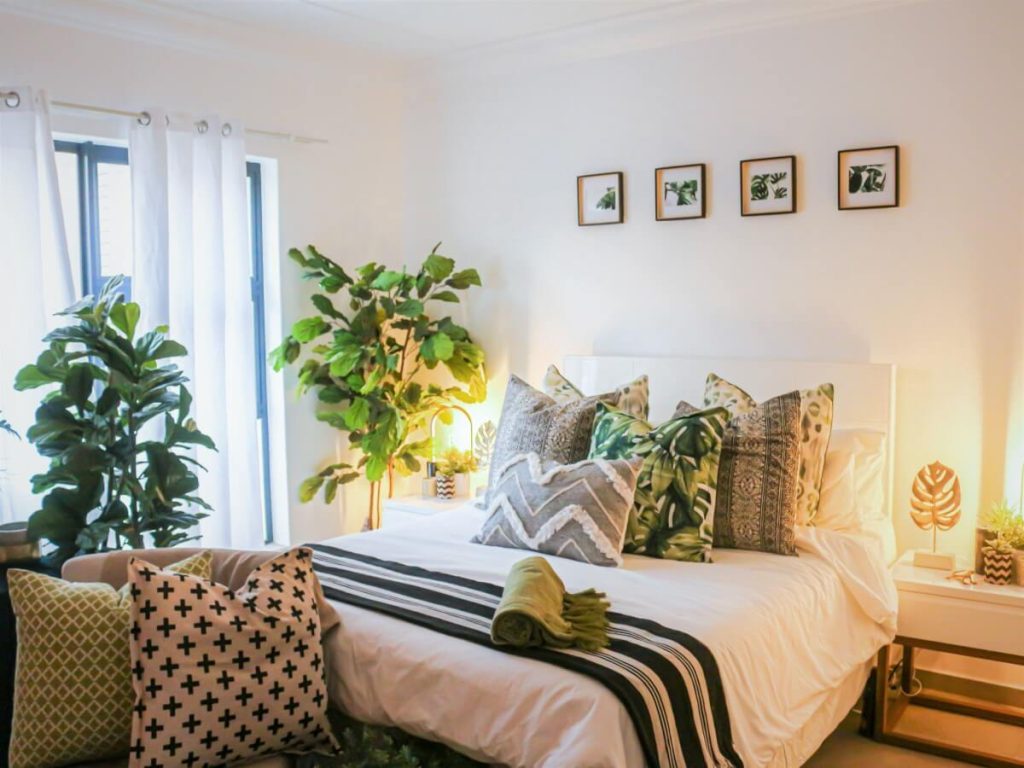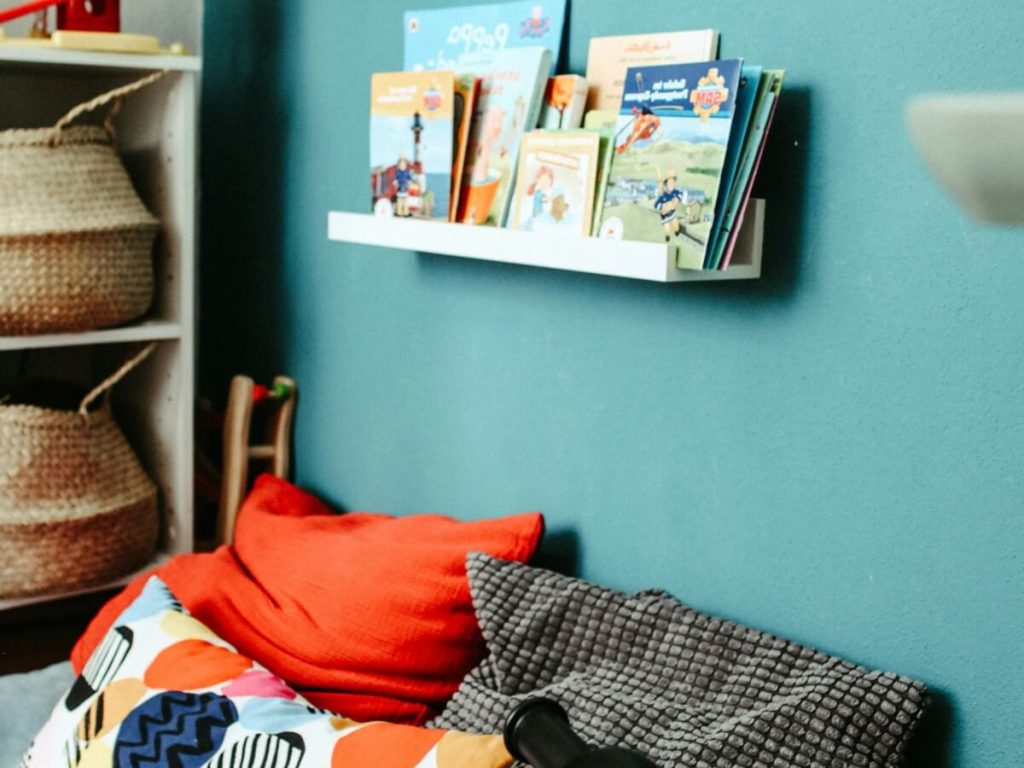Yes, You Can Use Dark Walls in a Small Bedroom—Here’s How
The cocoon effect will get you cozy.

Many say that dark paint makes a small room feel smaller. But what if we told you that dark walls can actually make a compact bedroom feel cozy, chic, and incredibly stylish? When done right, bold hues like deep navy, charcoal, and forest green add depth, drama, and sophistication—without closing in the space.
Whether you’re styling a snug city apartment or a modest guest room, here’s how to make dark walls work beautifully in small spaces.
Table of Contents
1. Embrace the Cocoon Effect
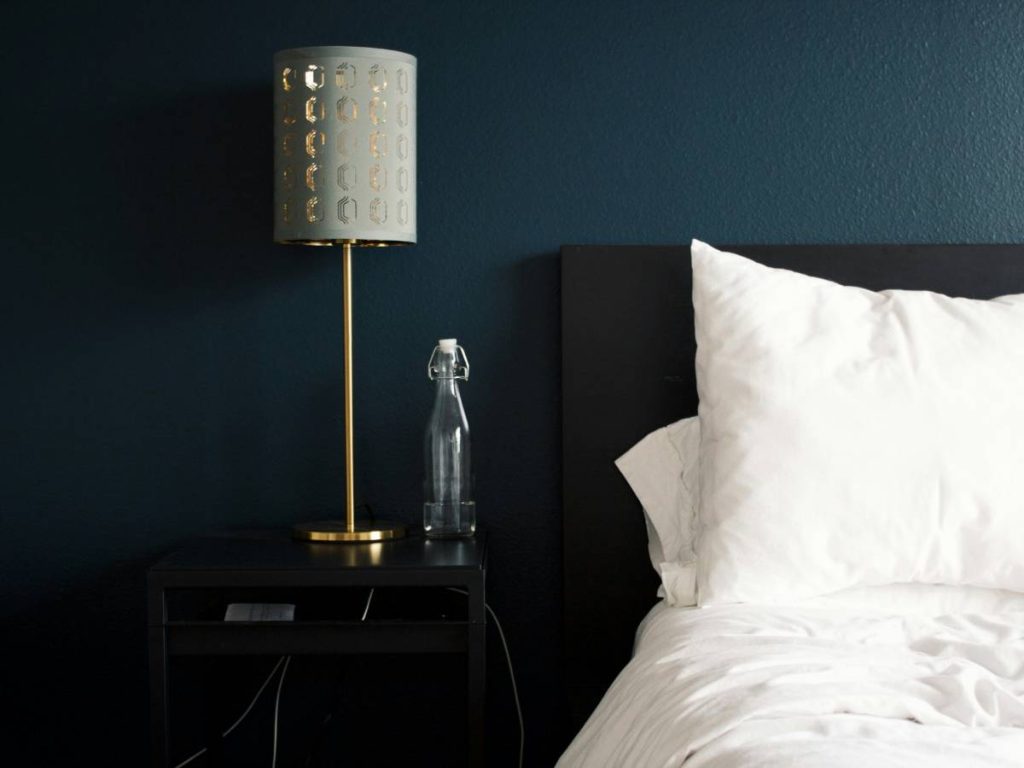
Instead of fighting the size of your bedroom, lean into it. Deep colors can create a cozy, enveloping effect—especially when layered with soft lighting and plush textures. A moody hue on the walls paired with ambient lighting can feel like a warm hug at the end of a long day.
When I painted my tiny guest room in a stormy gray, I expected it to feel tighter—but the opposite happened. With velvet curtains, layered throws, and soft lighting, it became the coziest nook in the house.
Tips: Want that boutique hotel vibe? Try matte charcoal walls with velvet bedding and an oversized floor mirror.
2. Use Contrast to Your Advantage
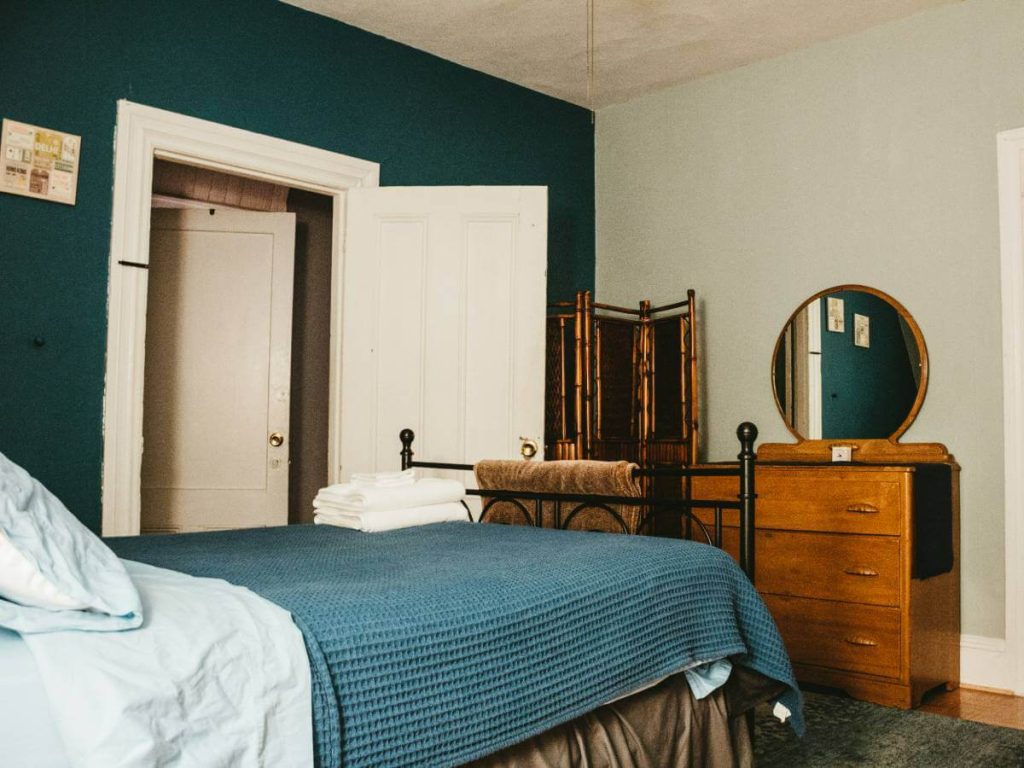
Dark walls don’t mean your entire room needs to follow suit. In fact, high-contrast pairings can make the space feel more dynamic and balanced.
Try this mix:
- Crisp white bedding for a clean focal point
- Brass or gold-toned fixtures to warm up the tone
- Light wood furniture for organic balance
- Natural linen or cotton curtains to soften the mood
Adding lighter tones breaks up the darkness and keeps the room from feeling visually heavy.
3. Choose the Right Finish
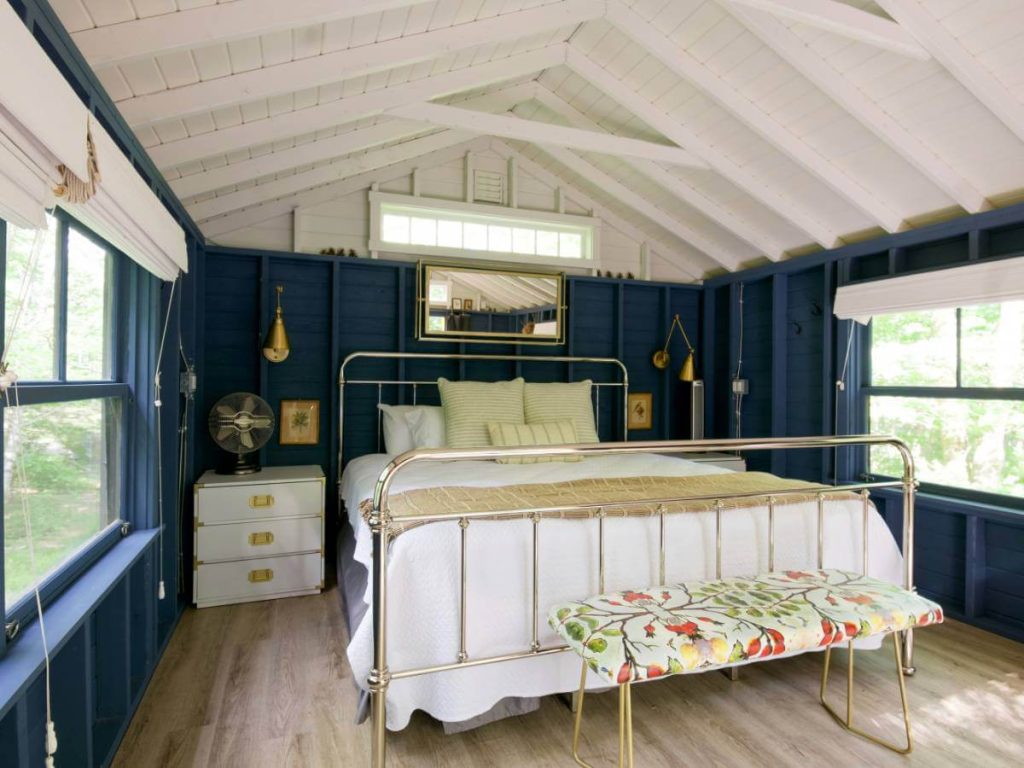
Not all dark paints are created equal—and neither are their finishes. If you’re working with a small bedroom, stick with matte or eggshell finishes rather than high-gloss.
Why? Matte surfaces:
- Absorb light for a softer, more refined look
- Hide imperfections better (especially in older homes)
- Enhance that cozy, cocooned feeling
Tips: I always recommend a matte finish for small bedrooms with dark walls. Gloss reflects too much, drawing attention to every flaw and corner.
4. Balance with Light Elements
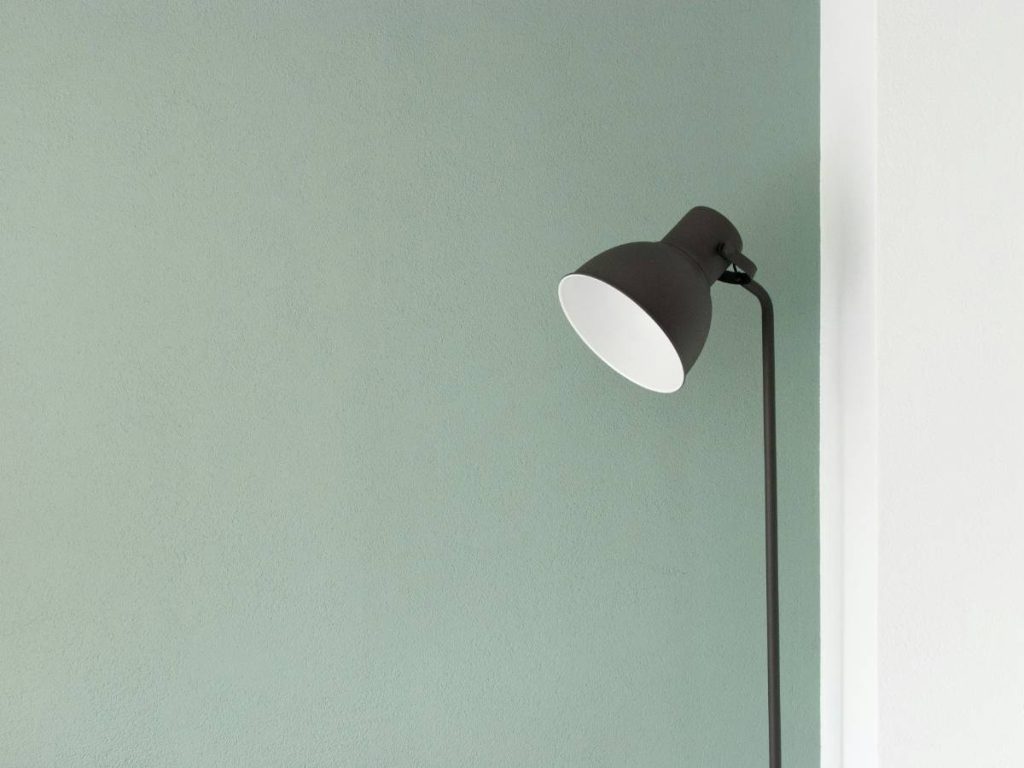
Light-colored accessories play a key role in lifting a room with deep wall color. Mirrors, pale woods, and soft textiles help bounce natural light around, keeping things airy.
Instead of matching your dark walls with dark furniture, try mixing in:
- Cream or beige bed linens
- White-framed art or photography
- A natural wood nightstand or bench
- Pale or sheer curtains to let in soft daylight
Pro Move: Place a mirror across from a window to double the light source—it’s a simple hack that works every time.
5. Keep It Cohesive
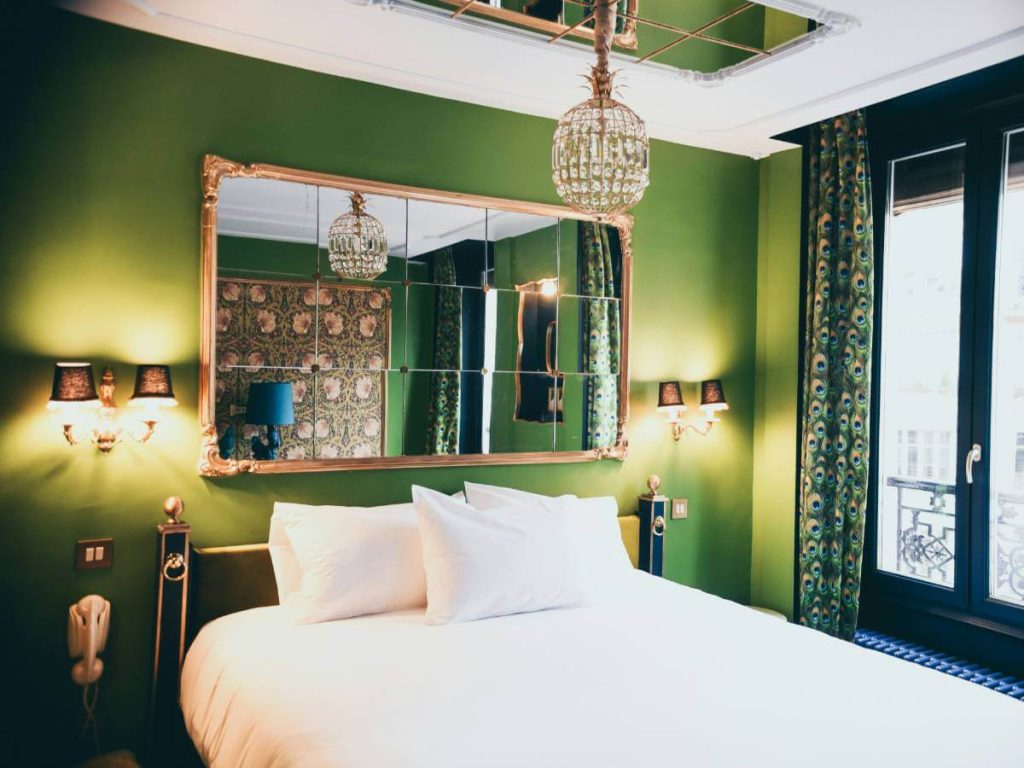
Here’s a trick most people miss: painting all four walls—and even the ceiling—the same color. It might sound bold, but this monochromatic approach actually reduces visual clutter.
When I committed to painting the trim and ceiling the same deep green as the walls, the room felt taller and more designed. There were no abrupt stops—just a smooth, calming flow.
Stick to one tone throughout, then introduce variation through materials: think woven textures, brass, marble, or crisp cottons.
6. Let Texture Shine
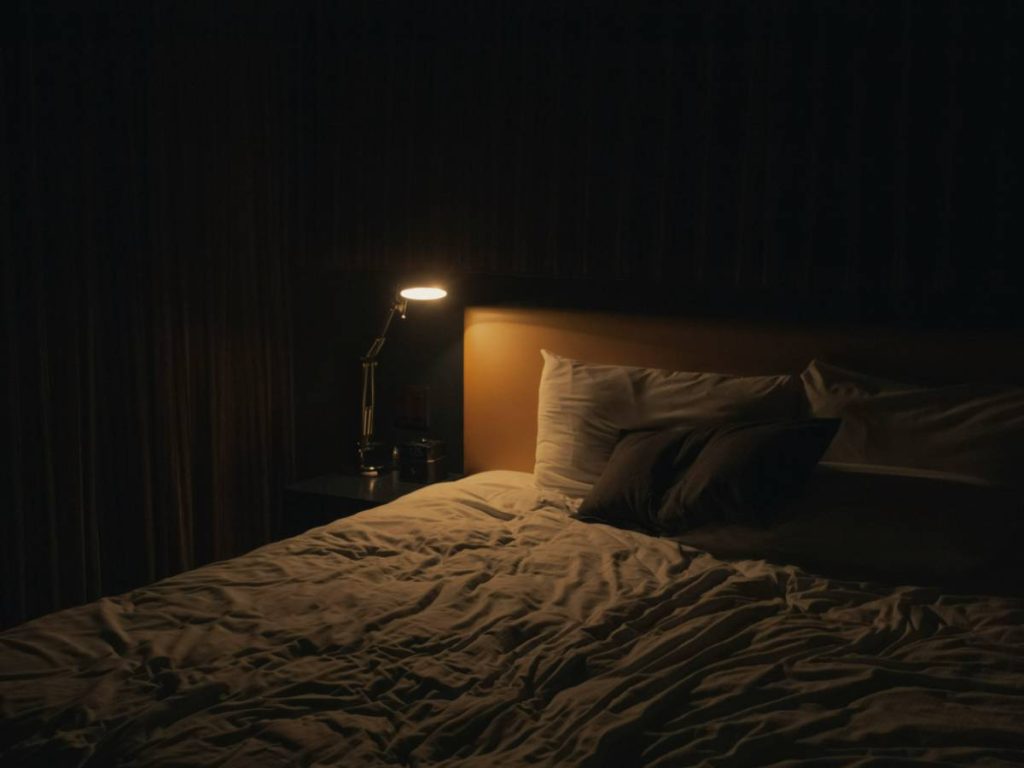
Dark walls make textures stand out in a way that light walls often can’t. This is where you can get playful.
Mix these materials for depth:
- Raw-edge linen bedding
- Woven seagrass baskets
- Velvet or suede pillows
- A ceramic lamp with a rough glaze
- Natural wood tones to bring warmth
Layered texture = visual interest without chaos.
7. Keep Decor Simple but Impactful

With dark walls, less really is more. Let the paint color be the star by curating just a few pieces that command attention.
Here’s what works well:
- One or two oversized framed art pieces (rather than a gallery wall)
- A sculptural table lamp
- Streamlined bedding in a tight, neutral palette
Styling Note: Stick to three main colors max. My go-to? Navy + warm white + natural wood. Simple, elegant, and effortless.
Conclusion: Dark Walls, Done Right
Dark walls aren’t just for moody lofts or dramatic dining rooms. With the right supporting elements—soft textures, natural light, thoughtful contrast—a deep color can transform your small bedroom into something truly special.
So don’t be afraid of the dark. When you’re intentional, bold choices pay off.
Frequently Asked Questions
1. Are dark walls a bad idea for small bedrooms?
Not at all. When styled thoughtfully, dark walls can actually make a small bedroom feel more intentional and intimate. It’s all about how you balance color, texture, and lighting.
2. Which paint finish is best for dark walls in small spaces?
A matte or eggshell finish works best in small bedrooms with dark colors. These finishes offer a soft, non-reflective surface that enhances the cozy effect and hides imperfections better than glossy options.
3. Can I use dark walls if my bedroom doesn’t get a lot of natural light?
Yes, but balance is key. Add plenty of artificial light sources (lamps, sconces, overhead lighting), and use mirrors or reflective decor to help brighten the space.
4. What colors work well with dark walls in small bedrooms?
Light neutrals like white, cream, beige, soft greys, and metallics (brass, gold) work beautifully with dark wall colors. These accents create contrast and prevent the room from feeling too heavy.
5. Should I paint all the walls dark or just one accent wall?
Both can work, but for a high-design look, painting all walls (and even the ceiling) creates a cocoon effect that can make the room feel larger and more cohesive. Try a single wall first if you’re unsure.



